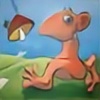HOME | DD
 DChernov — In Barn
DChernov — In Barn

#barn #pencil #36x56cm #artwork #pencildrawing #pencilgraphite #pencilshading #penciltraditional #realism #realistic #realisticdrawing
Published: 2020-10-24 13:30:51 +0000 UTC; Views: 2195; Favourites: 87; Downloads: 0
Redirect to original
Description
Denis Chernov
2020
In Barn
36x56cm
pencil on paper
Kimberly Smith about the drawing:
"At first glance, the image contains innocent, yet no less potent, references to Jules Bastien LePage’s “Haymaking.” Haymaking shows only a pause after the action, where your art portrays the same experience, yet through the span of a lifetime. There is the imagination of youth, that moment in time famously portrayed, and then follows the faint and tender, yet still sharp, memory. That intoxicating combination of the sweet smell of hay, the dust of the earth – that which we are made of – and the sweat of labor. The crude wheelbarrow also portrays that of time. There is the youth, that exuberance of seeking action, followed by midlife, where that transition takes place when splinters from labor cause pain. And then there is old age, where calloused hands rejoice in the comfort of picking up the handles of the barrow. I can see an old man, joints stiff with gout, but with joy on his face as he feels the sun on his back and his body still able to move slow and sure to complete a day of labor.
The space is crude. The hay is fresh, and the barrow is well maintained. There is pride in such simplicity of life. But the shadows blanket the area of labor, which shows that such actions are hidden upon death, or perhaps not glorified within the current state of society. The areas of rubble on the floor show a mostly hidden neglect, which may trip the worker on his way to the barrow – much like the neglected actions Modern man has lost, and trips him on route to honest labor.
In contrast, the light shines brightly in from both door and window upon the harvest itself, like the light that shines in from the dome of a cathedral and the side door that penitents enter the sacred space. (The central door was reserved for ceremony and not for laity – however, I may be wrong in this relating to Eastern Orthodoxy). This divine light shines first upon the hay. The hay not only feeds the livestock, but provides a soft cushion for the pleasure of rest in the interim. Hay, the grass of the field, is the life of man. It is short, flowers for a season, then is either burned or returned back to the field. But in the interim, there can be the pleasure of experiencing living. Because the hay is not growing in the field in the artwork, but is harvested, it invites the view to pause and consider that moment between everyday life and death – that time of judgement.
The light not only brings the hay to life, but also brightens the distant wall in an unidentifiable shape. So bright that the details of the wall are completely lost. The shape captures the viewer’s attention and imagination takes over, like children who seek recognizable form in clouds. We may ponder what form the Divine takes upon, when it’s pure light erases all details of form, and we can only see the outline it takes when surrounded by dark – that which it is not. Viewers who have the experience of staring at the shape through time, know that as time passes, so does the shape. Patience in Inquiry also has the same reward.
On one hand, the artwork may be a message from the artist regarding the neglect of honest labor. And the entreaty to pause and consider the meaning of life outside of modern distractions, pleasures, and lazy decadence. However, beyond the voice of one man, this same message is well hidden within the great architecture of the religious world. Instead of the pomp and glittering religious wealth, where penitents may purchase proof of their piety, the artist invites the penitent to consider piety through simple life and labor – a return to what we are as humanity. It is an invitation to walk through the door of the rural shed, clean up the rubble that has been neglected, put our hands and backs into the barrow, and see the messages of the divine through honest labor. There is a pleasing infatuation with this idea; however, the reality mirrors the expression of the young woman in “Haymaking.” When the fading pleasures are stripped away, and we glimpse that which we are – dust – can we begin to understand.
Related content
Comments: 6

👍: 0 ⏩: 0

👍: 1 ⏩: 0

👍: 1 ⏩: 0

👍: 1 ⏩: 0

👍: 1 ⏩: 0

👍: 1 ⏩: 0

















